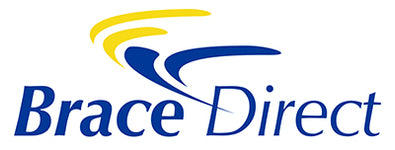
Meniscus Tears: Braces & Relief for Knee Cartilage Injuries
Your knee’s meniscus is a crescent-shaped cartilage that cushions and stabilizes the joint. When it’s torn or damaged, you may feel pain, swelling, or a catching sensation, making movement difficult. At Brace Direct, we offer specialized braces designed to reduce strain, improve alignment, and ease pain, helping you move with greater confidence and speedier recovery.
Common Causes of Meniscus Tears

Meniscus damage can happen suddenly or develop gradually. Frequent culprits include:
- Twisting Movements: Rapid pivots or deep knee bending under load, often during sports.
- Age-Related Wear: Thinning cartilage that’s more prone to tearing from minor strain or daily activities.
- Direct Impact: Falls or collisions placing excessive force on the knee, causing immediate tears.
- Overuse or Repetitive Stress: Recurrent pressure on the joint over time, slowly weakening meniscal tissue.
- Post-Surgery Healing: If you’ve had meniscal repair or partial removal, bracing supports the knee while tissues mend.
Signs can include swelling, locking or catching, joint line tenderness, and difficulty bending or straightening the knee fully.
How Knee Braces Support Meniscus Recovery
A supportive knee brace can alleviate stress on your meniscus by:
- Stabilizing the Joint: Controlling movements that twist or compress the cartilage, helping prevent further damage.
- Reducing Pain & Swelling: Gentle compression boosts circulation, managing inflammation and easing discomfort.
- Guiding Proper Alignment: Keeps the knee tracked correctly, reducing uneven pressure on injured cartilage.
- Enhancing Rehab Exercises: Braces offer confidence to move more effectively during physical therapy sessions.
By limiting harmful motions and offering structural support, bracing can accelerate healing and lower the risk of re-injury.
Top Braces for Meniscus Tears
Explore our knee braces geared toward managing meniscus injuries, reducing pain, and allowing safer motion:

Brace Direct Hinged Knee Brace
A versatile hinged design offering moderate stability for minor meniscus tears, reducing undue stress and pain.
Shop Now
Breg Hinged Knee Support
Provides lateral stability while allowing comfortable flexion, helping protect a weakened meniscus during daily movement or rehab.
Shop Now
Brace Direct Plus Size ROM Knee Brace
Ideal for larger builds needing meniscus protection. Offers adjustable motion controls to accommodate varying levels of injury and recovery pace.
Shop NowProtect Your Meniscus & Regain Confidence
Don’t let a meniscus tear slow you down. Our specialized braces stabilize the knee, lessen pain, and empower you to move more freely. For guidance on sizing or recovery, visit our Perfect Fit Promise or browse the entire meniscus collection below.
Shop Meniscus Braces```









